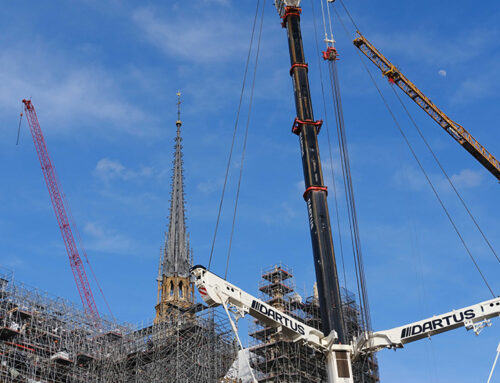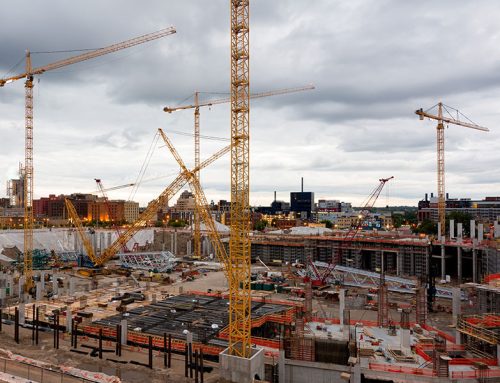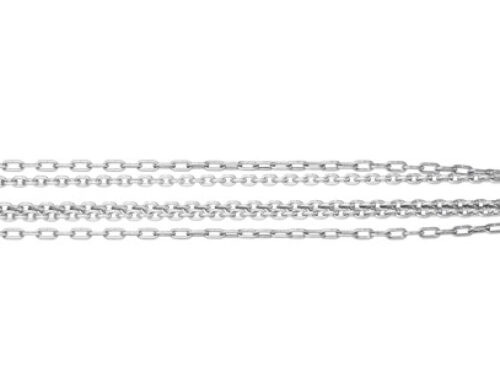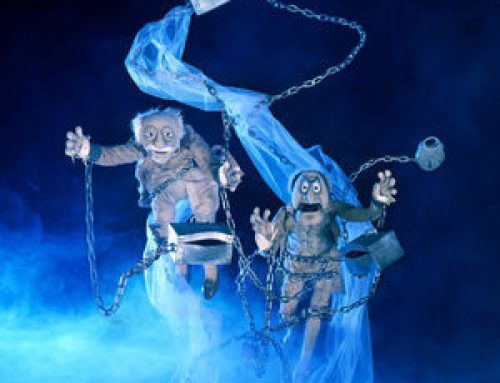We’re hoping October is bringing you a pleasant change of pace. Something about cooling temperatures, changing leaves, and football seems to bring a different cadence to autumn weeks, even if the day-to-day schedule is every bit as full as the summer.
At Industrial Wire Rope, autumn brought us students! A few weeks ago, students from a University of Cincinnati sculpting class visited us to see how ropes of all types can be used in hanging artwork for viewing.

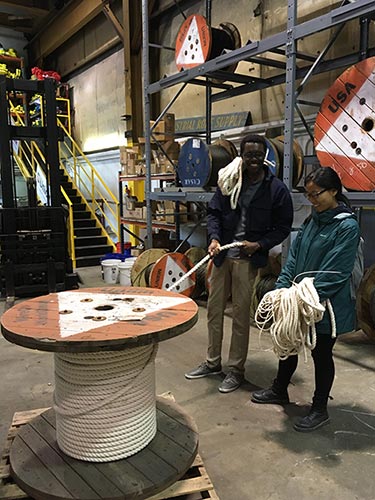
We enjoyed the class visit. It’s great to see the enthusiasm and creativity in the students.
Bridges: Different Rivers and 150 Years
Our July newsletter included a feature of the John A. Roebling Bridge here in Cincinnati. It’s a landmark in more than one way. Certainly, as a recognized historical structure, and also in its construction with the use of both vertical suspenders and diagonal stays.
Nearly 150 years later, a bridge on another river became a project for Industrial Wire Rope. The Daniel Boone Bridge in Chesterfield, MO carries Interstate 64, along with U.S. Route 40 and 61, across the Missouri river joining St. Louis County and St. Charles County.
The Daniel Boone Bridge was a beneficiary of stimulus money released during the Great Recession, with the funding used to build a new eastbound span.
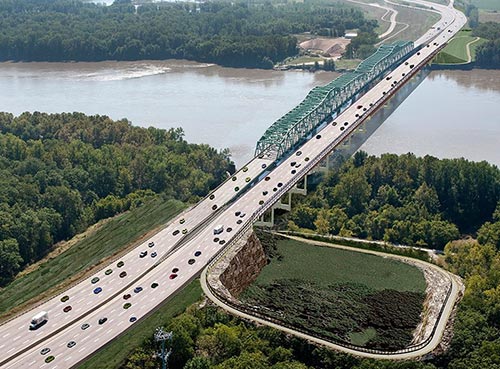
Industrial Wire Rope played a vital role in the raising of this span, providing 100% of the rigging needed to lift girders into place. Account Manager, Chris Chappell described how different rigging was required for each lift; weight, length, and headroom were different for each girder.
Chris played a key role in creating the opportunity for Industrial Wire Rope to supply Walsh Construction on this project.
As he relates the story, Chris “cold called” on Walsh engineers at another, earlier project, The Blanchette Memorial Bridge, which carries I-70 across the Missouri River. Chris visited the work site and shared the benefits of working with Industrial Wire Rope. In addition to competitive pricing and exceptional service, the proximity of Industrial Wire Rope to the Daniel Boone Bridge was also a plus.
“Big projects like this don’t come up all the time,” Chris reflected. The 3” wire rope slings for the Daniel Boone Bridge were the biggest he’d ever sold. Importantly, the turn-around time on their fabrication and delivery impressed Walsh. “Big projects” are wonderful; so are satisfied customers!
It got Caught in a Web: My Attention!
For me, it’s easy to get lost in a spider’s web. At least once a week, I step outside early in the morning to find an incredible, amazing structure that might be invisible except for the dew it’s captured glistening in the sunshine.
Spider silk. Yes, spider silk. And it’s in a class of its own as a “fiber rope”. Delicate as it appears, spider silk is enviable, humbling even, when you work around rope all day.
As coincidence would have it, Smithsonian.com published an article last summer on the development of artificial spider silk. Fun facts about real spider silk first:
- Spider silk is one of the sturdiest materials found in nature. Some may say it’s stronger than steel.
- A common garden spider can produce as many as seven different types of silk, each with a specific purpose.
- Spiders will “recycle” their webs, eating old ones for the protein in the silk.
Back to the Smithsonian.com article, the artificial spider silk that researchers at Cambridge University have created has astounding properties of its own, beginning with it is 98% water. It will be interesting to see what’s ahead as further work is done on this material. Smithsonian.com describes applications for products as diverse as bike helmets and airplane wings. Gets your imagination going, doesn’t it?!

Aerial Construction
One minute I was pondering the miracle of spider webs; the next minute a story about the use of helicopters in construction snared my attention. It’s another story out of Wire Rope News; and it seems to me that every time I look at an issue, there’s a story reminding me of a fascinating project in Cincinnati.
The local project this article reminded me of was construction of the “Star Tower” in 1991. Built for WSTR-TV, this tower transmits both digital TV and FM radio. At 954 feet, and perched on top of a Cincinnati hill, the Star Tower is visible for miles; it’s even a welcome home signal on certain flight patterns into CVG, the Cincinnati/Northern Kentucky Airport.
The base of the tower was constructed using cranes, firmly planted on the ground. A Sikorsky S-64 helicopter became an aerial crane for the upper sections. This phase of construction was an amazing show for area residents to watch. The precision and grace displayed in raising the upper sections were incredible.
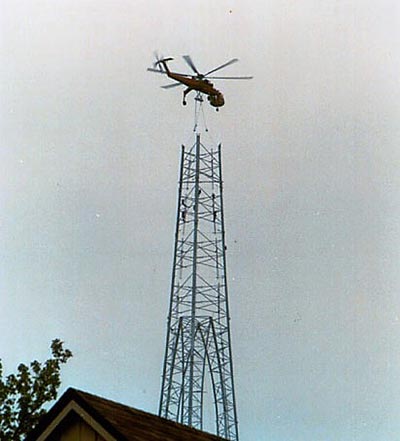
Until November…
Wow. This is why the industrial wire rope business is so interesting. In the course of just a few minutes we “bridged” several worlds: art, bridge-building itself, spiders and helicopters! And rope is the tie that binds them!
Enjoy the rest of October! We hope Halloween treats you sweetly.

